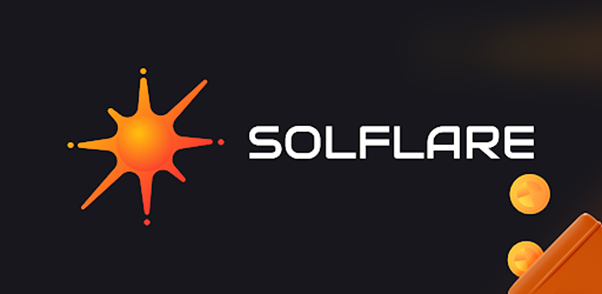Ever get that uneasy feeling when juggling crypto wallets? Yeah, me too. I was messing around with a couple of Solana wallets last month, and somethin’ felt off—security-wise especially. Then I stumbled on the solflare wallet. Seriously, it’s like the missing puzzle piece for anyone deep into Solana DeFi, especially if you want Ledger support baked in.
Okay, let me back up a bit. Solana’s blazing fast, no doubt—transactions practically zip through. But managing your assets safely? That’s a whole different story. Most wallets feel either too clunky or not secure enough. At least, that was my first impression. Initially, I thought any wallet just had to do the job, but actually—wait—handling real assets on-chain demands a lot more nuance, especially once you start layering in DeFi protocols.
Here’s the thing. Ledger integration is a total must for me. Hardware wallets are like your crypto’s personal bodyguards, right? So when I found out solflare wallet supports Ledger natively, I was intrigued. This isn’t just another hot wallet; it’s a bridge between convenience and ironclad security, something that’s very very important when you’re playing with DeFi on Solana.
But hold on—there’s more to unpack. Solflare isn’t just about storage; it’s a full-on DeFi portal. You can stake, swap tokens, and even participate in liquidity pools—all without leaving the wallet interface. That blew me away. It’s like having a mini decentralized exchange and staking platform rolled into one simple UI. Hmm, makes me wonder why more wallets haven’t nailed this combo yet.
Something else that bugs me about a lot of crypto wallets is their clunky UX. You know, those interfaces that look like they were designed in the early 2000s? Solflare bucks that trend with a clean, modern feel that’s surprisingly user-friendly. I’m biased, but for a wallet supporting Ledger and advanced DeFi features, it’s pretty damn slick.

Diving Deeper: How Ledger Support Elevates Your Solana DeFi Experience
Let me tell you—linking your Ledger device to Solflare feels seamless. You just plug it in, authenticate, and bam, your private keys never leave the hardware. This hardware-software synergy is crucial because no matter how advanced a wallet’s software is, if your keys are exposed, you’re toast.
On one hand, some folks say software wallets are fine for small amounts, but actually, when you start getting serious with staking or yield farming on Solana, that risk magnifies. The Ledger support here mitigates that risk big time. I’ll be honest, it took me a hot minute to trust this setup, but after some digging and testing, it’s legit.
Another thing: Solflare handles transaction signing in a way that’s pretty intuitive. You get prompted on your Ledger device for each action, so there’s no mystery. Seeing the exact transaction details on your hardware wallet screen before approving? That’s peace of mind you can’t fake.
Now, I’m not saying it’s perfect. Sometimes the connection between the Ledger and Solflare glitches, especially if your USB port is finicky or your Ledger firmware is outdated. But those are minor hiccups compared to the security gains. Oh, and by the way, the Solflare team seems pretty active in pushing updates to tackle these bugs.
Honestly, I didn’t expect to find a wallet that balanced ease of use with Ledger support this well. It’s not just about holding SOL tokens; the wallet also plays nice with all kinds of SPL tokens and NFTs, which is huge if you’re into the broader Solana ecosystem.
Why Solflare Stands Out in the Crowded Solana DeFi Wallet Space
There’s a ton of wallets out there claiming to be the “best” for Solana. But here’s the kicker—most either lack robust Ledger integration or fall short on DeFi features. Solflare nails both, which is rare. My gut says this combo will become the gold standard, especially as Solana’s DeFi scene keeps booming.
Think about this: DeFi is inherently risky, right? Smart contracts can be buggy, and market volatility can be brutal. Having a wallet that not only protects your keys via Ledger but also streamlines your DeFi interactions is a huge advantage. It keeps you nimble and secure at the same time.
Plus, for those who like to tinker, Solflare’s interface gives you access to governance proposals and token airdrops directly. That’s pretty neat because it means you’re not stuck toggling between apps or browsers. Everything’s under one roof. It’s like having a Swiss Army knife for Solana, but easier to wield.
One minor gripe I have—sometimes the wallet’s staking rewards display can lag behind on updates, leaving you guessing your actual earnings for a bit. It’s not a dealbreaker, but it does make me double-check on-chain data occasionally. Still, this is the kind of quirk I’m willing to overlook given the wider benefits.
Also, worth mentioning: the solflare wallet team has a pretty solid reputation in the Solana community. They’re responsive on social channels and transparent with updates. That kind of openness is refreshing in crypto, where silence often speaks louder than words.
So, if you’re serious about Solana DeFi and want a wallet that respects both your need for security and your desire for advanced features, give this wallet a shot. Check this out—many folks in the community swear by it, and for good reason.
And hey, if you want to peek further, the official solflare wallet site has all the details you need. It’s not just hype; it’s real tools for real users.
Frequently Asked Questions
Is Solflare wallet compatible with Ledger Nano S and Nano X?
Yes, both Ledger Nano S and Nano X are supported for secure hardware wallet integration with Solflare, allowing you to keep your private keys offline while interacting with Solana DeFi.
Can I stake SOL directly through Solflare?
Absolutely. Solflare lets you stake SOL and other supported tokens within the wallet interface, streamlining your DeFi activities without switchin’ apps.
Does Solflare support NFTs on Solana?
Yep, you can manage and view your Solana-based NFTs right inside Solflare, which is handy if you’re into the NFT scene.